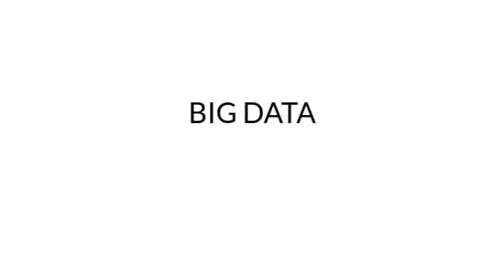What is the future of big data analytics?

Jenn К
author of all this stuff
You are surely aware of the amount of Data constantly and ongoing growing. According to the Forbes: “By the year 2020, about 1.7 megabytes of new information will be created every second for every human being on the planet.” That’s it. That’s the main reason why big data science and big data analysis are enormously popular at the time. So, let’s find out what big data analysis is and why it’s so important to businesses and for daily life.
Put simply, big data analysis is the processing process of examining a huge array of data. Big data analysis aims to find hidden patterns, previously unknown correlations, market trends, consumer preferences, and to get other necessary insights in a digestible format.
The companies that use big data analytics in their work can not only significantly increase the level of effectiveness of their marketing campaigns, but also significantly improve user experience.
It’s obvious that the big data analysis is really a big deal, but what exactly benefits big data analysis can deliver? Let’s find out:
- Ability to processing the massive amounts of information in a moment;
- Focusing on innovation processes;
- The solutions that Big Data Analytics offers contribute to the progressive development of business;
- A proactive approach to business development based on real-time data-driven solutions;
- The ability to make quick decisions based on changes in demand or the overall market situation;
Thanks to better targeting, the process of developing new products is based on obviously known needs.
Now, when you know about benefits of big data analysis, let’s switch to the big data analysis processes of working with data:
- Data storage and management;
- Data stripping;
- Data mining;
- Data visualization;
- Data integration;
- Grouping of data.
Obviously that big data analysis process could not be exercised without special tools. Today there are hundreds of tools that can facilitate or accelerate the big data analysis process, but let’s just focus on the best of it:
Open source data tools
Apache Hadoop, it’s a leading open source data platform that delivers a high-quality processing of huge data by using simple programming models. Hadoop can easily manage analytical algorithms and help every business or infrastructure operate more effectively, bringing new avenues and deriving next-level competitive advantage.
Microsoft HDInsight is a simple, cost-effective open source enterprise analytics service. Microsoft HDInsight aims to provide data analysis with an industry-leading SLA. Also, HDInsight offers enterprise-grade security and monitoring solutions by using the power of integration Azure Log Analytics.
Skytree is another tool that aims to provide big data analysis solutions. Its offers such analysis process features as highly scalable algorithms and the power of AI for big data analysis to help to build more accurate models faster.
Data Visualization Tools
Datawrapper is an innovative open source data visualization platform that aims to help with the process of easy, correct and embeddable charts creation in a short term. This online data-visualization tool seeks to create a bar, line, map or any other related high-quality visualization that is easy to use.
Infogram is a free big data visualization platform that offers infographic, maps, reports, charts, dashboards and social media visuals solutions. Infographic provides more than 1 million images, 35 interactive charts and more than 500 maps. Today there are over 30 000 businesses that use the powers of Infogram.
Google Fusion Tables is a data visualization web application that offers a chart, map, network graph, or custom layout and also allows an opportunity to combine a few tables to create a single visualization that includes both sets of data.
Sentiment Tools
The OpenText Sentiment Analysis aims to “recognize whether portions of text (topic/ sentence/ document) are factual or subjective and, in the latter case, if the opinion expressed within these pieces of content are positive, negative, mixed, or neutral.” The tool supports several languages and allows identifying trends.
SAS sentiment analysis is a software tool that works in real-time by using statistical modeling in combination with natural language processing techniques. SAS offers model comparison, multilevel taxonomies, keyword search, graphics & reports, interactive workbench and other services.
By offering text analysis through the API and Excel plugin Semantria is a big data analysis tool that provides services for analyzing texts, tweets, and other comments from clients and receive highly valuable insights. Also, it offers transparent text analytics technology and also easy configuration and tuning.

Jenn К
Author bio: author of all this stuff
